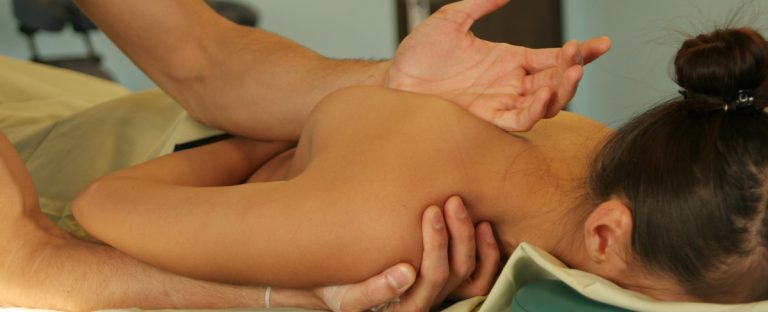As a massage therapist, you are often juggling several roles. From managing appointments, maintaining client records, and handling billing to focusing on providing exceptional care to your clients – it can all become overwhelming. The good news? It doesn’t have to be. Thanks to technology advancements, specifically in the area of practice management software, practitioners now have powerful tools to streamline their operations. At the forefront of these advancements is Holbie Practice Management Software from Holistic Billing Services, specifically designed for practitioners like you.
What is Holbie Practice Management Software?
Holbie Practice Management Software is an all-in-one tool created to manage and simplify various administrative tasks within your massage therapy practice. From online scheduling to electronic health records (EHR), insurance billing, and much more – Holbie is designed to optimize your practice’s efficiency, leaving you with more time to focus on your client’s care.
Scheduling Simplified
One of the critical features of Holbie’s software is online scheduling. According to a study by Accenture, 68% of patients said they are more likely to choose medical providers who offer digital scheduling. This feature allows your clients to book, reschedule or cancel their appointments online at their convenience. It also sends out automated reminders to your clients, significantly reducing no-show rates.
Easy-to-Use Electronic Health Records
Maintaining up-to-date, comprehensive health records is an integral part of a massage therapist’s role. Holbie includes an EHR system that is tailored to the needs of a massage therapy practice. It allows you to quickly input SOAP notes, upload relevant files, and maintain an organized record of your client’s health history, treatment plans, and progress – all in a secure, HIPAA-compliant manner.
Streamlined Insurance Billing
Navigating the complexities of insurance billing can be a significant challenge for many massage therapists. Holbie software includes an insurance billing feature that simplifies this process. Whether you’re managing superbill generation, claim submissions, or tracking your reimbursements, Holbie’s insurance billing feature has you covered.
A Bird’s Eye View of Your Practice
Holbie also provides practice management tools, giving you an overview of your practice’s performance. By offering insights into your busiest days, average client visits, revenue trends, and much more, it helps you make data-driven decisions to grow your practice.
Why Choose Holbie?
So why choose Holbie? Holbie is designed to be user-friendly, ensuring that you and your staff can navigate the system with ease. The software is also accessible anytime, anywhere, giving you the flexibility to manage your practice outside of the office or on the go.
On top of that, Holbie is dedicated to continually developing innovative solutions to meet your ever-evolving needs. When you opt for Holbie Practice Management, you choose a partner committed to your practice’s success.
Running a successful massage therapy practice goes beyond providing excellent patient care. It also involves effectively managing the various administrative tasks that keep your practice running smoothly. With Holbie, you can streamline your operations, enhance your service delivery, and focus more on what you do best – providing exceptional massage therapy to your clients.
So, are you ready to simplify your practice and amplify your impact? Contact Holbie today to discover how our Practice Management Software can revolutionize your massage therapy practice. You can also book a demo to experience firsthand how Holbie can benefit your practice.
Remember, Holbie is not just software – it’s a partner dedicated to your success. Reach out today and take the first step toward simplifying your practice.
One of the quickest ways to ensure your healthcare revenue cycle is running smoothly is to utilize the most current medical billing codes for your practice. If you code for the wrong treatment, over or under code for services rendered, or submit your claims late, then you run the risk of delayed payment and a host of other issues.
If your holistic practice offers massage therapy treatments, then you’ll want to keep this list of massage therapy CPT codes and tips handy! Be sure to bookmark this page for easy reference so that you can enjoy a streamlined medical billing process.
Essential Massage Therapy CPT Codes
Some of the most commonly used CPT codes used by massage therapists are below:
- 97124 (Massage therapy): Describes work including effleurage, petrissage, and/or tapotement (stroking, compression, percussion) for every 15 minutes
- 97140 (Manual therapy): Includes therapy techniques, consisting of but not limited to connective tissue massage, joint mobilization and manipulation, manual traction, passive range of motion, soft tissue mobilization and manipulation, and therapeutic massage for every 15 minutes
- 97112 (Neuromuscular re-education): Entails the re-education of movement, balance, coordination, kinesthetic sense, posture, and proprioception in 15-minute intervals; examples include PNF (proprioceptive neuromuscular facilitation), Feldenkreis, Bobath, BAP’s Boards, and de-sensitization methods
- 97010 (Hot/cold packs): describes the application of moist heat or cryotherapy for relaxing muscle spasticity, promotion of vasodilation, increasing lymph flow, or other situations
- 97110 (Therapeutic exercise): use this code for therapeutic exercises applied to a single or multiple body parts to develop strength, endurance, range of motion, and flexibility within 15-minute intervals
Essential Modifiers for Massage Therapy CPT Codes
Sometimes it’s not enough to use the baseline massage therapy CPT codes – in which case, you’ll likely need to refer to these code modifiers:
- Modifier 59: This modifier for massage therapy CPT codes indicates that two separate but similar procedures were performed on the client within the same day or time span of a few days
- Modifier 52: Use this modifier if billing for a procedure that used a reduced modality as the provider saw fit
Billing Medicare: Timed vs. Untimed Massage Therapy CPT Codes
If your practice accepts patients who are covered by Medicare, then you’ll need to be mindful of the difference between billing for time or untimed massage therapy services.
Billing Medicare for Untimed Massage Therapy
When you choose to bill for untimed massage therapy services, you can only bill for one whole service. This means that no matter how much time you spend with your client, you’re only billing for one treatment as a whole.
Billing Medicare for Timed Massage Therapy Treatment
On the other hand, if you’re billing Medicare for a timed massage therapy treatment, then you get reimbursed based on the time spent 1:1 with the patient providing treatment. These timed codes can be billed multiple times per session.
Each code equates to 15 minutes of treatment; however, if the time spent with your client doesn’t result in an even amount of time divisible by 15, then you’ll use the 8-minute rule. Basically, after dividing the time of the session by 15, if the remainder you have is greater than 8 then you can round up and bill for an additional unit. If the remainder is 7 or less, then you’ll bill for the minimum number of units.
Here’s a handy table for referencing the 8-Minute Rule:
- 8-22 minutes: 1 Unit
- 23-37 minutes: 2 Units
- 38-52 minutes: 3 Units
- 53-67 minutes: 4 Units
Medical Billing Tips for Your Massage Therapy Practice
Keeping your healthcare revenue cycle in good health is no small feat; check out these tips for medical billing success:
First, Ensure Your Practice Is Appropriately Credentialed
Before you can bill insurance companies or government programs for your massage therapy services, your practice should be medically credentialed to bill as an in-network provider or enrolled to bill out-of-network. Credentialing is necessary for many commercial insurance companies, or government plans like Veterans Affairs. Typically, the process involves documentation and verifying all licenses, though the exact requirements differ from provider to provider.
Confirm Your Patient’s Insurance Eligibility Ahead of Time
A frequent problem when going through the medical billing process is when claims are denied or need to be reworked as a result of ineligible patient coverage information. Whether the patient is wholly ineligible for the services rendered or their information changed without being updated, this can result in delayed payments and the need to rework the claim. Be sure to confirm your patient’s information every time they come into your practice!
Be Careful to Avoid Overcoding
Due to the complexity of massage therapy insurance billing, overcoding is a common mistake. It’s important to be aware of the rules associated with all the massage therapy CPT codes to avoid delays.
For instance, you can only bill either one of codes 97140 or 97124; you won’t be able to bill for both. Likewise, CPT code 97010 for hot/cold packs is now mostly “bundled” with codes 97124 or 97140. This means you might not be able to bill a separate fee for this service.
Transform Your Medical Billing Processes With HBS!
Balancing your practice’s online appointments, SOAP notes, billing and coding while delivering care to your patients can be overwhelming but outsourcing your massage therapy insurance billing can save you time, energy, and optimize your revenue cycle management!
As an experienced EMR and insurance billing provider for holistic practices, Holistic Billing Services can help your practice navigate the insurance billing process to minimize denials and increase revenue. With a knowledgeable partner by your side, you can focus more on treating patients to help your practice grow rather than worrying about insurance billing.
To learn more about our massage therapy billing services, talk to one of our billing and coding experts today.
Your massage therapy practice is responsible for delivering great care to your patients through the many benefits of massage. If you’re looking to expand any specialty services that you offer, consider adding fascia stretching to your practice’s repertoire! Fascia stretching and fascia massage can help you grow your practice by speaking to physical pain points that your community might be experiencing. Keep reading to learn more!
What Is Fascia Stretching?
Fascia encompasses each muscle and connects muscles together both on the surface and on a deeper level. Fascia connects tendons, ligaments, and bones to form a whole-body network of tissue—it also connects to your organs and internal systems.
Since this kind of connection exists between nearly all parts of the body, both internally and externally, fascia stretching and fascia massage therapy can significantly improve the mobility and flexibility of your patients.
Fascia stretching and massage address the entire body, intentionally and subsequently. It’s all connected, so delivering treatment to fascia results in delivering treatment to the entire body instead of isolated muscle groups or static stretching.
Who Benefits from Fascia Stretching?
Anyone can benefit from fascia stretching and fascia massage treatments, including any patient who is recommended for this specialty by their physician, fitness enthusiasts, athletes, and more.
Fascial restriction, or the limitation or pain affecting fascia in the body, can be related to trauma, strains, injuries, a sedentary lifestyle, and more. These causes might include the following suspects:
- overuse
- repetitive movements
- injuries
- weak muscles
- poor posture
- physical, mental, or emotional stress
- extended periods of sitting or standing
- overall lack of physical activity
- misalignments and imbalances
As with any type of treatment plan, the best course of action for treating a patient with fascia stretching or fascia massage will vary from one situation to the next. Typically more than one session is recommended, and overall mobility is often improved after just one treatment!
Fascia stretching results in decreased stress, improved sleep, and significant relief from pain in just a few sessions.
Why You Should Add Fascia Stretching to Your Practice
If you’re wanting to grow your massage therapy practice by expanding the variety of specialty massages or treatments that you offer, consider adding fascia stretching for the following reasons:
Attract New Patients
Want to attract new patients? Consider adding fascia stretching and fascia massage services to your practice’s list of offerings. Potential clients in your community might be looking exactly for that service—or be recommended it by their physician or athletic trainer—which provides an excellent opportunity for your massage therapy practice.
It Complements Other Forms of Holistic Treatments
Fascia stretching doesn’t have to be a standalone form of holistic treatment for your patients; it dovetails quite nicely with other forms of massage therapy treatments, acupuncture treatments, and more! This means that your holistic practice is able to furthermore offer comprehensive, integrated care for your community.
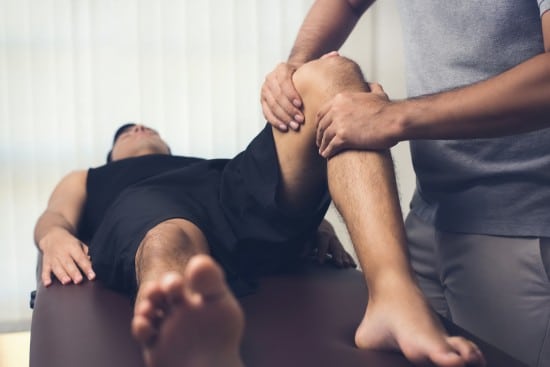
Top 3 Benefits of Massage Therapy
In general, massage therapy can help provide relief for a variety of conditions and ailments, including:
Repetitive Motion or Strain Injuries
For those suffering with pain from repetitive motion or strain injuries, or other related issues that negatively impact the muscles and joints, massage therapy can greatly improve mobility and reduce the pain associated with these injuries. Sensations like tenderness, throbbing or sharp pain in movement, tingling, etc. can be the result of overusing a group of muscles, staying in a particular posture for an extended period of time, heavy lifting, or another factor. Massage therapy can help reduce these feelings and restore mobility.
Chronic Pain
Massages have an inherent attachment to ideas of relaxation and gentle unwinding—and for good reason! Massage therapy facilitates relaxation which makes it a surefire way to reduce painful, chronic conditions. Whether caused by surgery, injury, or simply chronic ailments that induce pain, massage therapy can help your patients experience a lighter breath with reduced pain because it promotes blood flow and circulation while releasing the body’s natural painkillers.
Mental Ailments, like Depression
If your patient is experiencing depression, massage therapy likely won’t cure the condition alone—but it will relieve the physical symptoms associated with it, such as lethargy, back pain, joint pain, muscle aches, and more. By encouraging blood flow and promoting relaxation on a physical level in the patient’s muscles and connective tissue, they’ll become less stiff or rigid which might be contributing to their pain.
Why Effective Massage Therapy Insurance Billing Matters When Treating Patients
When massage therapists deliver treatments, such as fascia stretching or fascia massage, the medical billing process ensures that they receive reimbursements for delivering quality care. While medical billing is an integral function of the reimbursement process, it can be very complex; the slightest error can delay payments for weeks, if not longer. Ensuring the most accurate medical billing allows massage therapy practices to spend more time doing what they love: delivering care to their patients.
As an experienced billing provider for holistic providers, including massage therapists, Holistic Billing Services can help your massage therapy practice navigate the medical billing process to minimize denials and delays so you can increase revenue. With an expert partner by your side, you can focus more on treating patients to help your practice grow rather than worrying about insurance billing. To learn more about our massage therapy billing services, talk to one of our billing and coding experts today.
A recent consumer study found that 88% of respondents reported massage therapy was beneficial to their overall health and wellness. Want to offer massage therapy services to the veterans in your community, but aren’t sure how to manage billing the VA? We’re here to help you understand this process better so you can deliver quality care to veterans at your holistic practice.
There are numerous methods of massage therapy, including:
- Medical massage
- Hot stone massage
- Swedish massage
- Reflexology
- Trigger point massage
- Thai massage
Each method implements a particular set of movements that target muscles in order to increase blood flow, promote relaxation, alleviate physical pain, and encourage overall wellness.
Does the VA Cover Massage Therapy?
It depends on the specific circumstances and location. Some VA facilities may offer massage therapy as a form of rehabilitation for veterans, but it is not a widely covered service under VA benefits. It is best to check with your local VA facility or speak with a VA representative to determine if massage therapy is covered in your area.
Benefits of VA Massage Therapy
Massage therapy has been proven to treat a wide array of conditions veterans might be suffering from, including:
- Chronic pain: Massage therapy treatments help stimulate blood flow to parts of the body experiencing pain, which helps promote the release of natural painkillers; since massage therapy results in relaxation, overall chronic pain conditions can be managed with treatments. This is an especially timely holistic approach in light of the ongoing opioid epidemic.
- Depression: One study found that 11% of veterans were experiencing elevated levels of depression; massage therapy can help alleviate the physical symptoms of this mental condition, such as back pain, body aches, sluggishness, and more.
- Anxiety: A 2016 research study demonstrated that Swedish massage therapy treatment was successful in reducing the symptoms of Generalized Anxiety Disorder (GAD). Veterans often experience complicated symptoms of anxiety linked to PTSD and homelessness, which can increase the risk of suicide; incorporating a massage therapy treatment plan into an overall wellness plan can help mediate these symptoms.
How To Start Treating Veterans at Your Massage Therapy Practice
The US Department of Veterans Affairs recognizes clinical massage therapy as “one of the evidence-based, complementary and integrative health (CIH) approaches within the VHA Whole Health System of care” and covers the cost of this care when deemed necessary. Follow these steps to start treating veterans with massage therapy at your holistic practice!
Apply for Your National Provider Identifier (NPI)
A National Provider Identifier, or NPI, is a 10-digit identification number issued to healthcare providers in the U.S. by the Centers for Medicare and Medicaid Services. Your massage therapy practice will need to apply for an NPI if you are a HIPAA-covered health care provider or if you bill insurance for your services.
Determine Your Region
The VA Community Care Network (CCN) is divided into six regions that cover the continental United States in addition to Hawaii, the Caribbean, and the Pacific Islands. TriWest manages the western networks while Optum handles the eastern regions. Find out which region your practice resides in.
Get Credentialed
In order to provide quality care for veterans at your holistic practice with massage therapy, you’ll need to be credentialed with the region’s third-party administrator. This process typically takes at least three months to complete. Depending on your region, contact the following to get started with the credentialing process:
- Region 1: 888-901-7407 (Optum)
- Region 2: 844-839-6108 (Optum)
- Region 3: 888-901-6613 (Optum)
- Region 4: 866-286-4174 (Triwest)
- Region 5: 877-226-8749 (Triwest)
The VA has not officially contracted with an agency for Region 6; contact information is pending for that region.
Complete Registration Paperwork
Upon completing the credentialing process, you’ll need to submit the necessary paperwork to become fully registered with the network. This paperwork is submitted electronically and will include details regarding any final requirements that must be met in order to finish the credentialing process.
Receive Patient Authorizations
Once your holistic practice has been verified and authorized by the VA’s network, you’ll start to receive referrals to treat veterans who are approved to start massage therapy treatment. Your CCN administrator will provide the patient’s authorization letters before the patient’s first visit to your practice.
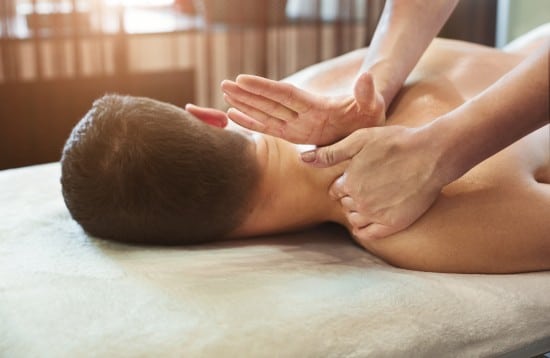
Checklist for Initial Claims Processing
When submitting an insurance claim to the VA for the first time, you’ll need to submit all the authorization letter pages together with the claim. Make sure you transmit all the following information with your massage therapy claim to avoid a denial:
- A cover letter
- The date range for services
- Authorization numbers
- The total number of visits authorized
- The patient’s demographics including address, date of birth, and social security number
- Documentation and CPT codes of treatments administered
By following this checklist, you can ensure your Veterans Administration insurance claim will have all the accurate information it needs for a smooth billing process.
Maximize Your Reimbursements for VA Insurance Claims with Holistic Billing
As a medical billing provider with a special focus on holistic and integrative health practices, such as massage therapy practices, Holistic Billing Services can help you get credentialed by your region’s CCN and help you start treating veterans right away. We have plenty of experience navigating the unique VA billing guidelines, which allows us to maximize your reimbursements and keep your practice’s revenue flowing.
To learn more about how you can get started providing acupuncture for veterans and active service members without worrying about having your VA claims denied, talk to our massage therapy billing and coding experts today!
Referrals are a fantastic method for gaining new patients at your massage therapy practice, but you can’t rely solely on them as a sustainable marketing strategy. Part of your future growth and success depends upon having a comprehensive advertising approach that can target a few different audiences across a variety of platforms. Keep reading to learn more about leveraging marketing to sustain a successful massage therapy practice!
Why Are Marketing and Advertising Important Avenues of Growth For Your Massage Therapy Practice?
Running a successful massage therapy practice means you’re marketing and advertising your services to the community you serve. After all, marketing and advertising are how you attract new customers, outline the services you provide and maintain relevance in your target market. Without utilizing strategies that promote your massage therapy practice, what are the odds of someone stumbling across it? Word of mouth is just one component of a comprehensive marketing strategy—there are several other avenues to take advantage of!
Marketing your massage therapy practice in the community you serve, explaining who you are and what your story is, and providing blurbs of meaningful content are all great manners to get noticed and attract your most loyal patients. After all, your massage therapy practice can’t grow if you don’t show it off!
How Much Should You Budget For Massage Therapy Advertising?
A good rule of thumb is to invest approximately 5% of your gross revenue on marketing activities if you want to maintain the size of your massage therapy practice. For example, if you collect $10,000 per month you should be budget around $500 per month on marketing and advertising tactics.
On the other hand, if you’re ramping up to grow your massage practice, it’s recommended that you spend between 7% and 15% of your gross revenue on marketing—depending on your goals and available budget for growth. It’s also understandable if your marketing budget changes a little bit over time; it should be somewhat flexible to account for the status and potential growth of your massage therapy practice.
What Is A Customer’s Lifetime Value?
As the name suggests, a customer’s lifetime value (CLV) is a prediction of the total financial worth of a patient to your massage therapy practice. CLV can be applied to any industry, but it’s incredibly practical to calculate it for the healthcare and service fields.
A Customer’s Lifetime Value can be measured in the following way:
Average Annual Value x Relationship Years + Patient Referral Value
= Customer Lifetime Value
First, we determine how much the average patient generates per year. For example, if you have a patient who visits your massage therapy practice once per month and each visit costs $100, then the total revenue generated is $1200. Factor in a 20% profit margin and the Average Annual Value of a massage therapy patient is $240.
Let’s say this patient continues going to your massage therapy practice for 10 years before moving to another state:
AAV ($240) x Relationship (10 years) = $2,400.
Patient Referral Value is the amount of additional revenue the original patient brings into your massage therapy practice by spreading the word about your services. If a patient refers two additional clients to your practice, and the total Average Annual Value for those patients combined is $480—which is $4,800 over 10 years—then the original patient’s official lifetime value is $7,200.
How Does CLV Impact Your Holistic Practice?

The lifetime value of a patient is equated to the anticipated total amount they’ll spend at your massage therapy practice. Knowing this figure for each of your patients is essential for planning your financial future and determining how much to invest in acquiring new patients or retaining current ones. Overall, CLV is directly connected to the profit level attached to each customer relationship; if you estimate a patient’s CLV to be $500, you wouldn’t want to spend more than that number to maintain the relationship since it wouldn’t be profitable to your massage therapy practice.
Once you start consistently measuring customer lifetime value, you can begin to implement specific strategies around pricing, sales, advertising, and patient retention with the goal of reducing costs and boosting profit. After all, when you know what to financially expect from a typical patient over the course of their relationship with your massage therapy practice, you can make educated spending decisions to ensure you maximize profitability and continue to attract the right types of customers.
5 Massage Therapy Marketing Ideas
When outlining an advertising plan for your massage therapy, keep these tips in mind:
Network with the Health Practitioners in Your Area
Whether you’re an experienced massage therapist or new to the industry—or your community—a great way to gain reliable patient referrals is through the doctors, naturopathic doctors, chiropractors, physiotherapists, and other holistic practitioners in your area. These providers work with clients who might desire a holistic approach to take care of their wellbeing, in addition to medical services. Plus, patients who are referred to you in this manner have a high probability of following through and becoming long-term, paying clients.
Invest in the Patient Experience
Patient experience entails every instance of connection between your patients and your massage therapy practice’s brand, including visits to your practice, phone calls to your front desk, engagement with your online presence, and even their exposure to advertising and social media. Optimizing the patient experience is a practice-wide effort that’s a process of monitoring, listening, and incorporating feedback from patients that add up to a continuous improvement of your massage therapy practice.
Leverage the Power of Social Media
Social media is ever more essential for patient communication and for potential patients to learn more about your massage therapy practice. Your overall online presence will affect the opinion a potential patient has of your brand moving forward, so be sure to take social media accounts, mentions, and responses into your customer experience strategy.
Start a Loyalty Program
A loyalty program incentivizes patients to continue visiting your massage therapy practice by offering discounts or benefits in return; it might take the form of a punch card or a points system that patients acquire with each visit. Although it’s not intended to be the sole method of retaining patients, a loyalty program can yield great results when it’s well done and implemented smoothly.
Facilitate Word of Mouth Marketing
Word of mouth marketing is a cornerstone of any massage therapy practice’s advertising plan. Potential clients who hear wonderful things about your practice from current patients are more likely to trust those reviews than almost any web presence or standalone marketing plan. Social media and other online review sites are excellent avenues to encourage your patients to talk about your massage therapy practice.
Massage Therapy Advertising Examples
- Massage Envy’s website boasts a holiday incentive program that promotes giving the gift of self-care to a loved one—a form of word of mouth marketing—yet treats the buyer with a $20 gift card in return. Plus, their site includes headers for the services offered—massage, stretch, and facials—so clients can easily navigate to what they’re looking for.
- Massage Studio, a local practice in Tampa, Florida, utilizes imagery to convey the goal of relaxation at their practice. Headers make it easy for clients to make appointments and a featured Etiquette page lets hesitant clients know what to expect, which helps break down trepidation about getting a massage. Promoting pertinent information on the homepage helps the site’s visitors feel that the practice is trustworthy, which benefits the brand’s image.
- CityTouch Massage Therapy, based in New York City, appeals to clients by proclaiming they now accept insurance. This can help make massage therapy more accessible to potential patients who might not explore massage options if not covered by their insurance plan.
Holistic Billing Services Supports Your Massage Therapy Practice’s Growth!
With these tips for marketing your massage therapy practice, we’re sure you’ll see sustainable growth! You can’t expand the community you serve unless your audience knows about how great your massage therapy services are—and part of ensuring the success of your practice entails having a streamlined medical billing strategy that minimizes errors while maximizing profits.
Partner with Holistic Billing Services to help grow your massage therapy practice in a variety of ways, including medical billing and coding, and facilitate the growth of your practice. Trusted since 1999, we’re here to help you put more time and attention back into your day of delivering quality care to patients.
Contact us today and let us help your massage therapy practice reach its potential!
Massage therapy is in increasing demand across the country; nearly 48 million people had a total of 214 million massages in the U.S. in 2018 alone. If you’re a licensed massage therapist feeling compelled to establish your own holistic practice, the odds are in your favor for finding clients in your community who are seeking your services.
However, starting your own practice or brainstorming a plan for sustainable growth doesn’t happen overnight—and, unfortunately, it’s not enough to be passionate about serving your community! While that passion is a great foundation and motivation, you really need a business plan to establish a strategy for your massage therapy practice and its successful future.
What Is a Medical Massage Therapist Business Plan?
Broadly speaking, a business plan is a formal, written document outlining the goals of a business, the means by which those goals will be achieved, and the metrics for measuring those goals. Essentially, a business plan provides a comprehensive strategy for the future of your business and helps you, as the owner, address the many components of operating a successful business.
With that understanding, a massage business plan is all of the above but tailored to establishing a massage therapy business. Along these lines, you’ll need to determine the general outline of your business but also navigate the medical billing and coding practices, understand the laws and regulations pertaining to your specialty, and how to market yourself to the community. Your work is important, and establishing your own holistic practice will be a fantastic asset to the patients you serve!
3 Benefits of Creating a Massage Therapy Business Plan
Owning and operating a successful massage therapy business entails managing a wide array of responsibilities; it can be overwhelming! Here’s why you need a massage therapy business plan:
Set Yourself Up For Success
There’s a popular saying: fortune favors the prepared—what seems to be “luck” on the outside is actually the result of your hard work and preparation! Taking the time and effort to compile a well-rounded business plan demonstrates to yourself and potential investors that you have a vision and a plan to bring it to fruition. Leverage your passion to bring massage therapy services to your community with a practical business plan that holds you accountable for making it a reality. After all, a business plan creates a 30% greater chance for growth—and a chance to double your success!
Keep Everything Organized
Starting a business is, unsurprisingly, a complex and complicated process that requires you to handle numerous decisions and factors. Thus, having a business plan that accounts for your holistic practice’s marketing strategy, potential supply and demand in your community, legal paperwork and certifications, and so much more will keep you and your team organized by putting everything in one place. As you learn more about the process of starting a massage therapy practice, you can just add information to the business plan and compile a list of questions with resources to find the answers.
Ensure Accountability at Your Holistic Practice
What does success look like for you and your massage therapy practice? Your practice needs to attract new patients, operate on sustainable financial practices, and have a strategy for growth over time or else risk falling stagnant and behind the competition. A business plan for your massage therapy practice can ensure accountability in terms of financial, operational, and even emotional success simply by putting your goals into writing and checking them over time.
7 Essentials You Need In Your Massage Therapist Business Plan
The business plan for your massage therapy practice needs to have some fundamental elements that set a solid foundation for your practice, both internally and externally. These essentials include:
- Executive summary: This is basically the mission and vision statement of your massage therapy practice; it’s your first impression and elevator pitch
- Business concepts: In this section, you’ll outline the who, what, and how of your practice; who is your audience, what value are you providing, and how are you going to deliver that to your patients
- Market analysis: Put your research skills to work by analyzing the market for massage therapy in your community and across the industry in general; this also can set up your marketing strategy by learning how best to attract patients
- Competitive analysis: Scope out the competition in your target area by getting insight into their pricing strategy, where they attract clients, and more
- Business strategy: This section distinguishes your massage therapy practice from the competition; for example, are you a value-based, accessible holistic practice, or do you offer specialized treatments for a small pool of clients?
- Financial plan: Divulge the costs of running your business, the current financial status of your practice, plans for medical billing and coding, how you’re funding your practice, and more; anything related to money matters goes in this section
- Operation & Implementation plan: Outline the daily operations of your practice—for example, the business hours and number of personnel you’ll have in the office—and what it’ll take to make it happen, such as the equipment or number of parking spots you’ll need
Your business plan will likely have tangents that branch off of these elements, which is to be expected and further illustrates how methodical you are regarding your practice’s future. Just be sure to start with these umbrella terms and return to them along the way of formulating your holistic practice’s plan for success.

How to Write a Massage Business Plan to Support Your Growth
The aforementioned seven essentials for your business plan set forth the sections required for a well-rounded, thoughtful business plan. In an effort to further break those broad sections down into manageable components, be sure to do the following when writing the business plan for your massage therapy practice:
Create SMART Goals
Articulating your goals is an essential step for writing your massage business plan; after all, studies show that 90% of people perform better with relevant and challenging goals.
SMART goals will help further define your business plan and establish metrics by which to determine how your massage therapy practice is operating. SMART is an acronym that fleshes out each individual goal:
- Specific: What exactly are you trying to accomplish?
- Measurable: How will you objectively judge your progress?
- Attainable: Make sure you’re not trying to wrap up too many things into one goal.
- Realistic: Carefully evaluate your available resources and skillsets when making your goal.
- Timely: Give yourself a deadline—and stick to it as best as you can.
For example, you might set a SMART goal to gain 10 new patient reviews in one month. If you have an established practice of 50 patients, that might align well with your goals, but if you only have 7 patients, then you’ll need to adjust your aims.
Do Your Research
This might be an obvious point, but it’s worth repeating: your massage therapy business plan should be researched from start to finish so you can make informed decisions regarding your practice’s strategy for growth and overall success. To start:
- Learn more about your market and how best to market your practice to acquire new patients
- Scope out the competition to see what they’re doing well or where you would improve on their methods
- Network with physicians in the area to establish connections and gain patient referrals
- Find out what events are happening in the community that you can host a table at to get more awareness about your holistic practice
- Ask current patients for feedback and for them to write a review to see if there are pain points you can address
While there won’t necessarily be a finish line when doing research—since new ideas, opinions, and strategies can emerge at any point—it’s still an important factor in the planning process and one that will greatly benefit your massage therapy practice.
Consider Strategic Partnerships That Support Your Growth
Running a successful massage therapy practice doesn’t happen overnight and it takes a lot of work that can feel overwhelming on your own. When writing the business plan for your massage therapy practice, consider one or two aspects that might be able to be automated or delegated to a partner organization.
One crucial element of your massage therapy practice’s success lies in your revenue cycle management process, which includes medical billing and coding, insurance reimbursements, compliance with important laws and regulations, and more. You don’t need to navigate those complicated components of your practice alone—the team of experts at Holistic Billing Services can take care of it all for you!
Established in 1999, Holistic Billing Service is an integrative health services firm focused on streamlining your documentation, billing, and coding process to enhance your revenue cycle management. We empower holistic practitioners to focus on delivering quality patient care and growing their practices.
Contact us today to see how we can accelerate your massage therapy practice’s growth!
The purpose of medical massage therapy is to treat and assist the healing process in acute and chronic pain related to connective tissue disorders. Incorporating medical massage therapy services into your holistic practice can provide significant relief to your community while boosting your overall revenue cycle. Keep reading to learn more!
What Is Massage Therapy?
A type of integrative medicine, massage therapy involves a certified massage therapist who manipulates the soft tissues of the body, including muscle, connective tissue, tendons, ligaments, and skin. By using varying degrees of pressure and movement, the massage therapist can induce pain relief for health conditions or relaxation for overall well-being.
Massage therapy offers numerous benefits for people seeking treatments for relaxation and health issues. According to the American Massage Therapy Association, some of the benefits of massage therapy include alleviating:
- Anxiety
- Depression
- Low immune function
- High blood pressure
- Heart rate issues
- Chronic pain
- Limited range of motion
- Poor quality of sleep
There is also limited evidence that massage therapy can help improve various health conditions including, but not limited to dementia, carpal tunnel syndrome, chronic headaches, post-surgical and burn recovery, fibromyalgia, and reducing the effects of chemotherapy and nausea.
Medical Massage vs. Therapeutic Massage
There are a few ways that a medical massage differs from therapeutic—or “spa”—massages. One key difference is the technique used. Medical massage therapy incorporates many of the same techniques as therapeutic massage, but with more advanced modalities. In a spa massage setting, you might receive a general Swedish massage technique versus a more intense, localized technique in a clinical setting.
Another difference is the overall purpose of each type of massage. General discomfort in an area usually responds well to a therapeutic session, whereas the goal of utilizing medical techniques is to produce permanent changes or to maintain the health of the body’s tissue. For example, long-distance runners might implement medical massage into their holistic wellbeing plan to maintain their muscular strength and prevent injury.
Since medical massages happen in a clinical setting compared to a franchise spa practice, the medical massage therapist will have a more specific, targeted treatment plan for your visits versus making an appointment for relaxation at a spa whenever you want to.
3 Benefits of Adding Medical Massage Services to Your Practice
Incorporating medical massage services to your holistic practice can provide a handful of benefits, including:
Reducing Massage Therapy Burnout
A medical massage practice provides a daily, hour to hour, diversity of conditions and patients treated. Since there are so many types of massage therapy techniques and solutions, this diversity helps to prevent therapist burnout. By adjusting their methods for each patient, the medical massage therapist can stay nimble and not get ergonomically stiff.
Boosting Your Revenue Cycle
By offering another aspect of holistic wellbeing to your practice, you demonstrate a commitment to serving the overall wellness of your community. Adding an additional element of holistic healthcare means you can attract patients who are looking to find a massage therapist in their area and find your practice.
Operating In More Facets of Your Community
Due to the fact that massage therapists can treat a wide variety of ailments and conditions, your holistic practice can gain a bigger presence in your community. Some examples of where you can plug the massage therapist feature of your holistic practice—and thus gain referrals—include:
- Health clubs
- Health food stores
- Associations that services patient populations that you treat
- Medical clinics
- Dental clinics
- Psychology clinics
- Athletic events
- Health fairs
- Public bulletin boards
- Support groups
3 Considerations for Your Medical Massage Services
Medical Billing & Coding
When massage therapists deliver treatments, medical billing processes ensure that they receive reimbursements for their care. While medical billing is an integral function of the reimbursement process, it can be very complex; the slightest error can delay payments for weeks, if not longer. Ensuring the most accurate medical billing allows medical therapists more time to spend doing what they love: delivering care to their patients.
Hiring Massage Therapists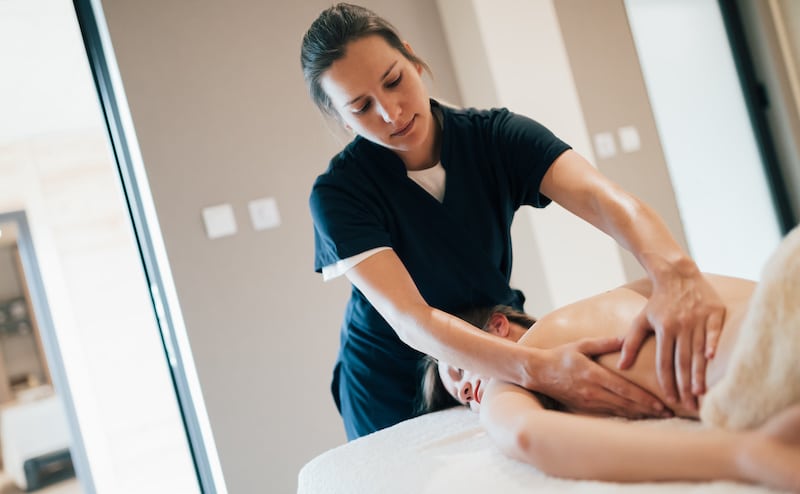
When hiring a massage therapist, let your patients know about it and post an announcement in your reception room. You’ll find that the word-of-mouth of your patients is a great referral source! There are massage schools in most major markets, plus you can post a job notice on the school bulletin board or in their newsletter.
Competing with Spa Massage Franchises
Wherever your holistic practice is based, there are probably a handful of massage franchises in your area that you’ll have to compete with when you include massage therapy as part of your services offered. Competition in any market is normal and to be expected; you can distinguish your practice from those chain operations by delivering quality services and educating your patients on the difference between so-called spa massages and medical massage therapy.
Turn to The Experts at HBS for Your Medical Massage Therapy Insurance Billing
While massage therapy has traditionally been a cash-based treatment in the United States, there is a growing trend toward practices accepting insurance. Expanding your business model by adding insurance billing for massage can increase your revenue while protecting your business from economic downturns.
Balancing your practice’s insurance enrollments, billing, and coding while delivering care to your patients can be overwhelming, but outsourcing your massage therapy insurance billing can save you time, energy, and streamline your revenue cycle management!
At Holistic Billing Services, we’ve helped thousands of practitioners and owners expand their practices by adding insurance billing for massage therapy. With an expert partner by your side, you can focus more on treating patients to help your practice grow rather than worrying about insurance billing. To learn more about our massage therapy billing services, talk to one of our billing and coding experts today.
Whether you suffer from physical or mental health issues, massage therapy offers an essential primary or complementary treatment option. Massage for wellness comes with many health benefits that help treat a variety of diseases and conditions. Read on to learn more about the different types of massages and how a holistic treatment plan can include massage therapy!
What is Massage Therapy?
A type of integrative medicine, massage therapy involves a certified massage therapist who manipulates the soft tissues of the body, including muscle, connective tissue, tendons, ligaments, and skin. By using varying degrees of pressure and movement, the massage therapist can induce pain relief for health conditions or relaxation for overall well-being. 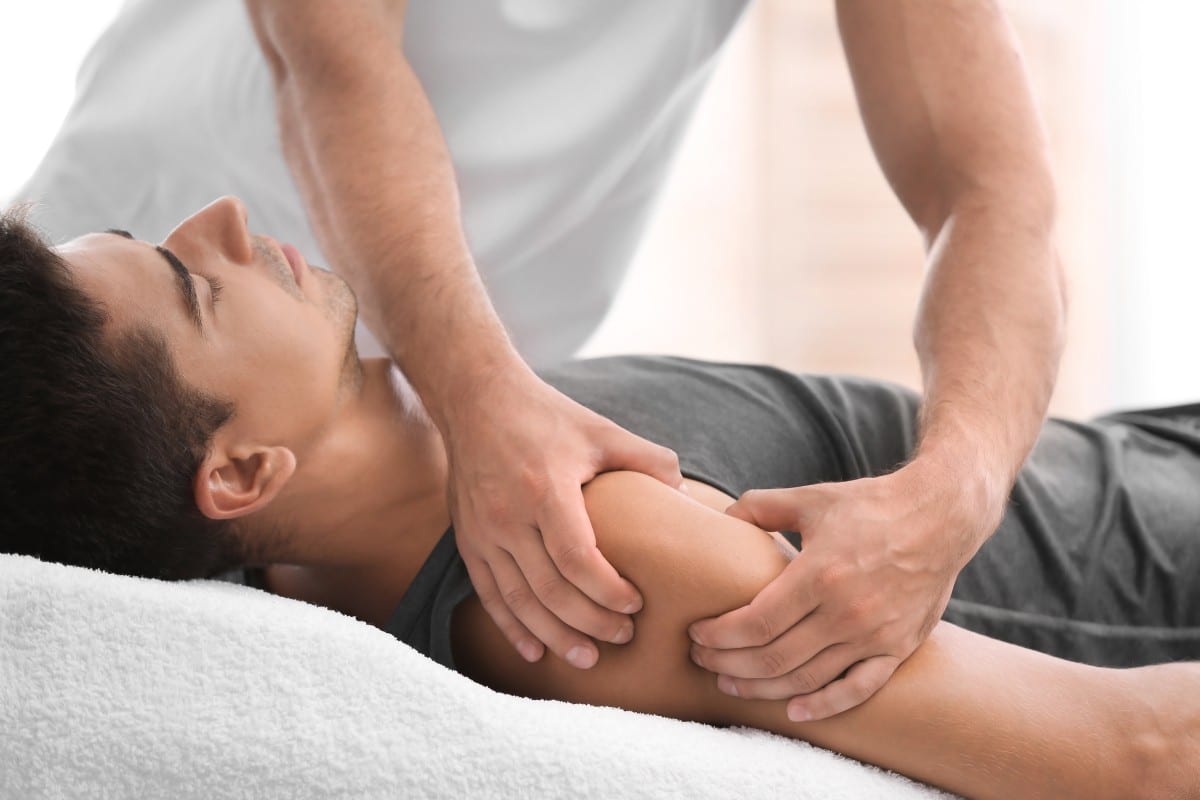
Massage therapy has its roots in both Eastern and Western medicine and has been practiced in most cultures to some extent. In fact, it’s one of the oldest remedies people have used for pain relief with a history that dates back about 5,000 years ago.
What are the Types of Massage Therapy?
There’s an array of different massage techniques, including:
Medical Massage
Unlike other forms of massage, which focus on relaxation, a medical massage is for medical needs and is prescribed by a physician as a form of treatment for diagnosed medical conditions. It’s also billed to insurance companies in fifteen-minute increments. The massage therapist may use a variety of techniques that will focus on the area of the body that is being affected by the medical diagnosis.
Swedish Massage
Swedish massage is a gentle full-body massage that helps to especially release muscle knots and fully relax patients.
Hot Stone Massage
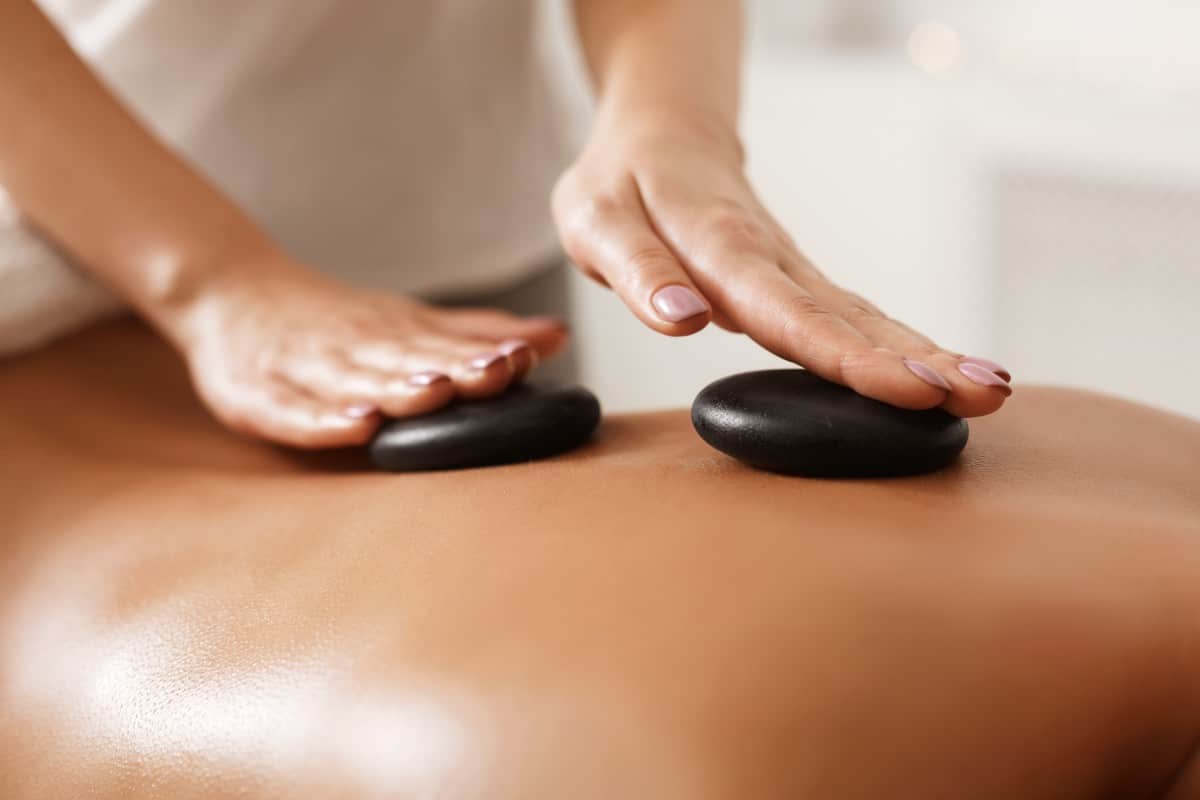 While this kind of massage therapy is similar to Swedish massage, hot stone massage involves heated stones instead of or in addition to the massage therapist’s hands. The heated stones help to improve blood circulation and relieve muscle tension for relaxation and pain relief. Generally, hot stone massage relieves more muscle tension than the Swedish method due to the heat involved.
While this kind of massage therapy is similar to Swedish massage, hot stone massage involves heated stones instead of or in addition to the massage therapist’s hands. The heated stones help to improve blood circulation and relieve muscle tension for relaxation and pain relief. Generally, hot stone massage relieves more muscle tension than the Swedish method due to the heat involved.
Aromatherapy Massage
This kind of massage therapy uses traditional massage techniques with the addition of essential oils. By combining gentle pressure with essential oils, this type of massage is designed for an emotional component. During treatment, the massage therapist will give a full-body massage while applying diluted essential oils to the skin.
Sports Massage
A sports massage is useful for treating repetitive muscle injuries from athletics or to help prevent a sports injury from occurring. This kind of treatment can also be used to increase flexibility and your overall athletic performance. Generally, a sports massage involves a full-body massage with the massage therapist focusing on certain muscles or parts of the body that need more attention.
Reflexology
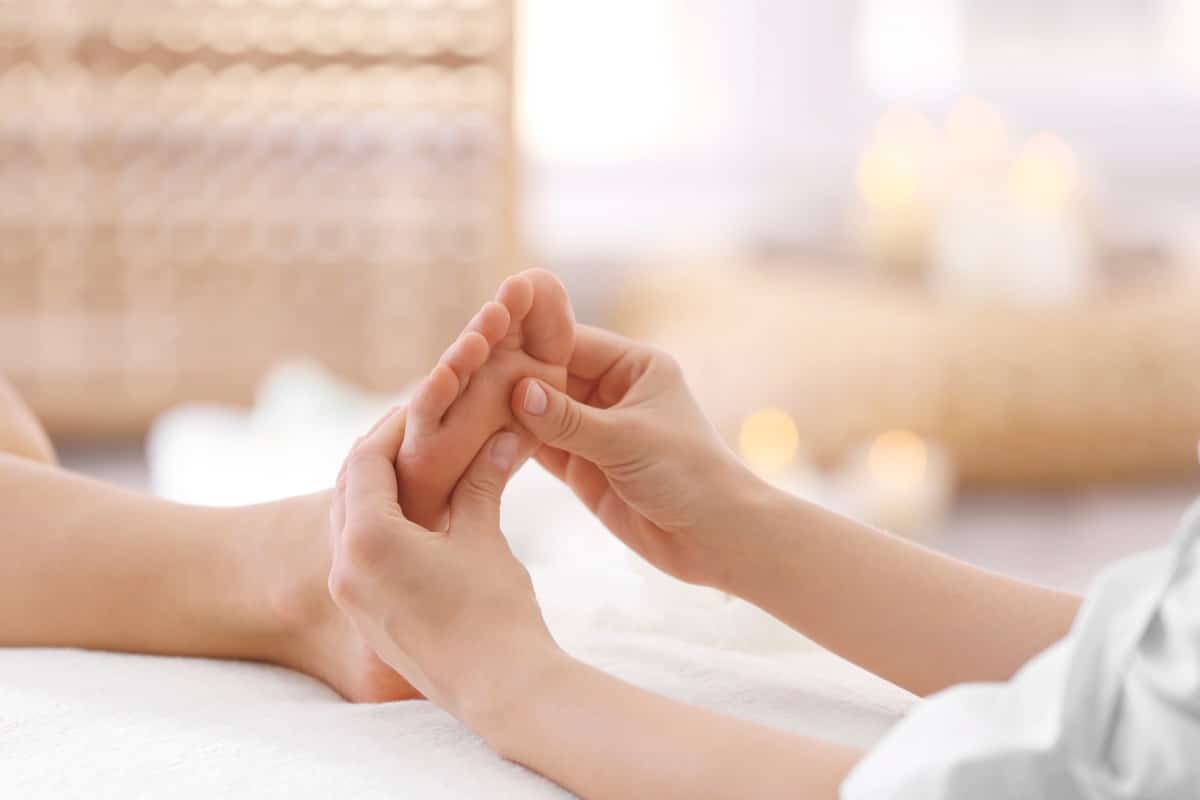 Reflexology focuses on the pressure points in your hands, feet, and ears. During treatment, the massage therapist uses finger pressure, kneading, and rubbing on these different pressure points to induce relaxation.
Reflexology focuses on the pressure points in your hands, feet, and ears. During treatment, the massage therapist uses finger pressure, kneading, and rubbing on these different pressure points to induce relaxation.
Trigger Point Massage
This type of massage targets “trigger points,” or areas in the body that cause pain such as tightness in muscle tissue. The massage therapist focuses on relieving these trigger points with gentle strokes combined with deep pressure to reduce pain. Trigger point massage is ideal for those seeking to alleviate chronic pain.
Thai Massage
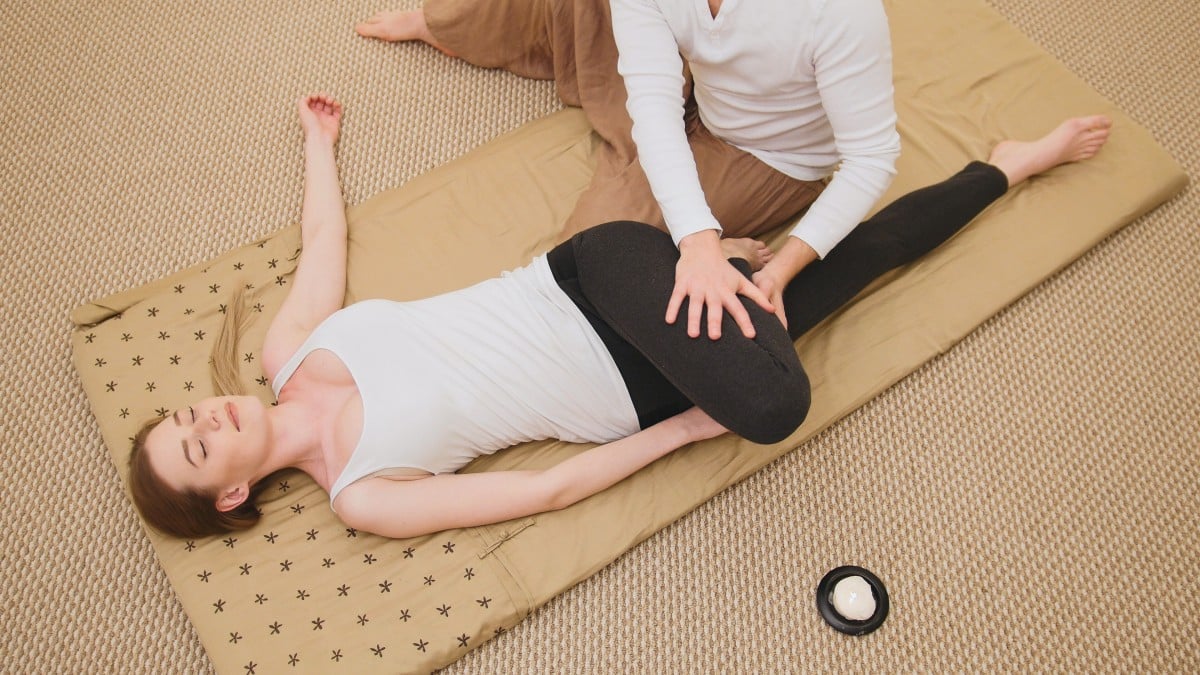 Thai massage is a unique blend of yoga, massage movements, and stretching. Unlike the other types of massage therapy, Thai massage is more active and involves the massage therapist moving and stretching the client in a sequence of postures, typically on a floor mat. In addition to being stretched in various positions, you will also have the massage therapist applying pressure to your body with their fingers and palms.
Thai massage is a unique blend of yoga, massage movements, and stretching. Unlike the other types of massage therapy, Thai massage is more active and involves the massage therapist moving and stretching the client in a sequence of postures, typically on a floor mat. In addition to being stretched in various positions, you will also have the massage therapist applying pressure to your body with their fingers and palms.
Top Conditions that Massage Therapy Can Help Treat
Massage therapy can help provide relief for many conditions, including:
1. Chronic Pain
Massage promotes relaxation, making it a great method for reducing a variety of pain conditions, from those caused by surgery or injury to chronic problems. Research has shown, for example, that massage therapy can help those who suffer from the common problem of low back pain. Massage can promote blood flow to parts of the body experiencing pain and release the body’s natural painkillers.
2. Anxiety
Massage for wellness can help those who suffer from mental health issues. For example, a study found that massage lowered the stress hormone cortisol in patients suffering from anxiety by 53%, according to the American Massage Therapy Association (AMTA).
3. Depression
When your muscles and connective tissues become stiff or rigid, it can cause pain and limit your movement. Massage therapy can help relieve this tension in your muscles and connective tissues. It also increases your blood flow and promotes relaxation.
If you have depression, massage therapy probably won’t cure your condition – but it may help relieve the physical symptoms associated with it. For example, massage may help alleviate sluggishness, back pain, joint pain, and muscle aches, which in turn helps to relieve fatigue and sleeping problems.
4 Repetitive Strain Injuries
Massage helps reduce symptoms in people suffering from repetitive strain injuries, or issues that affect the muscles and joints and cause symptoms like tenderness, throbbing pain, tingling, or loss of sensation. These issues can be caused by overusing a group of muscles, maintaining a particular posture for a long period of time, heavy lifting, and other factors. Research on patients with carpal tunnel syndrome, for example, found that massage therapy helped reduce pain and increase grip strength.
5. Cancer Recovery
Research shows that breast cancer patients benefit from a reduction of stress and anxiety when treated with massage therapy. For example, in a 5-week study at the University of Miami in 2003, massage therapy and progressive muscle relaxation therapy were compared in 58 women with stage I and II breast cancer. Both groups reported feeling less anxious, and the massage group also reported feeling less depressed. The massage group also showed increased levels of a brain chemical called dopamine, which helps produce a feeling of well-being. In addition, for the massage group, there was an increase in protective white blood cells that help boost the immune system from the first to the last day of the study.
6. Migraines
Many factors contribute to headaches, including stress, fatigue, and other health issues, including disease. Massage helps ease tension and pain, which helps patients reduce the symptoms of headaches or avoid them altogether. Migraine sufferers who receive massage for wellness experience fewer episodes of head pain, less severe symptoms, and improved quality of sleep, according to research.
7. Osteoarthritis
While there is still a need for further research on massage therapy for osteoarthritis of the knee, current studies suggest that it may have short-term benefits in relieving knee pain. Of six studies that evaluated massage therapy for osteoarthritis of the knee (408 total participants), five studies found that it provided short-term pain relief. Two of the studies that showed pain relief (149 participants) involved the use of essential oils (aromatherapy massage).
Why Effective Massage Therapy Insurance Billing Matters When Treating Patients
When massage therapists deliver treatments, medical billing processes ensure that they receive reimbursements for their care. While medical billing is an integral function of the reimbursement process, it can be very complex; the slightest error can delay payments for weeks, if not longer. Ensuring the most accurate medical billing allows medical therapists more time to spend doing what they love – delivering care to their patients.
However, balancing your holistic practice’s insurance enrollments, billing, and coding while delivering care to your patients can be overwhelming. How can you manage them all? By outsourcing your massage therapy insurance billing, your holistic practice can streamline your revenue cycle management – and save you the time and energy you can devote to your patients!
As an experienced billing provider for holistic providers, including massage therapists, Holistic Billing Services can help your massage therapy practice navigate the medical billing process to minimize denials and delays so you can increase revenue. With an expert partner by your side, you can focus more on treating patients to help your practice grow rather than worrying about insurance billing. To learn more about our massage therapy billing services, talk to one of our billing and coding experts today.
As holistic medicine becomes more popular, more people are turning to methods such as massage therapy to address their pain or for general relaxation. Both healthcare providers and patients alike are increasingly understanding the benefits of massage therapy and how important it is as a treatment, whether stand-alone or in conjunction with other treatments.
As massage therapy continues to expand (employment of massage therapists is projected to grow 21 percent from 2019 to 2029), your patients need to understand the full extent of the benefits of massage therapy. Choosing the right massage therapy practice can bring people improved physical, social, and mental well-being.
What Is Holistic Massage Therapy?
A type of integrative medicine, massage therapy involves a certified massage therapist who manipulates the soft tissues of the body, including muscle, connective tissue, tendons, ligaments, and skin. By using varying degrees of pressure and movement, the massage therapist can induce pain relief for health conditions or relaxation for overall well-being.
Massage therapy has its roots in both Eastern and Western medicine and has been practiced in most cultures to some extent. In fact, it’s one of the oldest remedies people have used for pain relief with a history that dates back about 5,000 years ago.
What are the Types of Holistic Massage Therapy?
The term “massage therapy” actually encompasses a wide range of massage types. The types of massage therapy out there focus on different parts of the body or specific treatment approaches. Here are some of the most common types of massage therapy.
Medical Massage
Unlike other forms of massage, which focus on relaxation, a medical massage is for medical needs. It’s prescribed by a physician as a form of treatment for diagnosed medical conditions and is billed to insurance companies in fifteen-minute increments. The massage therapist may use a variety of techniques that will focus on the area of the body that is being affected by the medical diagnosis. Besides being used to treat soft-tissue disorders, medical massage can also be prescribed for psychological conditions and accelerate rehabilitation after an injury or surgery. There are several requirements for treatments to be considered a medical massage:
- Medical massage requires a prescription
- Medical massage is a complementary therapy to other medical treatments
Medical massage is a general term that covers a wide variety of massage techniques that have proven to deliver medical benefits. Some common massage techniques that can be classified as medical massages include:
- Swedish massage
- Sports massage
- Deep tissue massage
- Trigger point massage
- Thai massage
- Prenatal massage
- Reflexology
- Aromatherapy
Again, these massage techniques require a medical diagnosis and prescription to be considered medical massage therapies.
Swedish Massage
Swedish massage is a gentle full-body massage that helps to especially release muscle knots and fully relax patients. This method of massage therapy is ideal for people who:
- Are new to massage therapy
- Are touch-sensitive
- Need to relieve stress
- Are managing minor pain
This method involves the patient lying on a massage table covered in a sheet. The massage therapist will remove the sheet to uncover areas they will be actively kneading or working on.
Hot Stone Massage

While this kind of massage therapy is similar to Swedish massage, hot stone massage involves heated stones instead of or in addition to the massage therapist’s hands. The heated stones help to improve blood circulation and relieve muscle tension for relaxation and pain relief. A hot stone massage is especially ideal for:
- Stress relief
- Improving blood flow
- Promoting relaxation
During treatment, the massage therapist places heated stones on different areas of the patient’s body. The therapist may apply pressure with their hands or use cold stones as well. Generally, hot stone massage relieves more muscle tension than the Swedish method due to the heat involved.
Aromatherapy Massage
This kind of massage therapy uses traditional massage techniques with the addition of essential oils. By combining gentle pressure with essential oils, this type of massage is designed for an emotional component. An aromatherapy massage is good for people who are looking to:
- Relieve pain
- Reduce anxiety and stress
- Relieve symptoms of depression
- Experience a mood boost
During treatment, the massage therapist will give a full-body massage while applying diluted essential oils to the skin. The oils may also be inhaled through a diffuser. If you’re sensitive to essential oils or strong smells, this massage will not be ideal for you.
Deep Tissue Massage
A stronger Swedish massage, deep tissue massage uses more pressure and can relieve chronic muscle problems, anxiety, and tight muscles. The massage therapist will use deep finger pressure and deliberate slow strokes to reach the deepest layers of tissue. This type of massage is ideal for:
- Reducing muscle tension
- Improving chronic pain
- Treating repetitive stress injuries, such as carpal tunnel syndrome
Although deep tissue massages are intensive procedures, they should not be painful.
Sports Massage
A sports massage is useful for treating repetitive muscle injuries from athletics or to help prevent a sports injury from occurring. This kind of treatment can also be used to increase flexibility and your overall athletic performance. Generally, a sports massage involves a full-body massage with the massage therapist focusing on certain muscles or parts of the body that need more attention. A sports massage is ideal for those who:
- Want to improve sports performance
- Have an injury from repetitive muscle use
- Want enhanced flexibility
- Want to reduce chances of injury
Trigger Point Massage
This type of massage targets “trigger points,” or areas in the body that cause pain such as tightness in muscle tissue. The massage therapist focuses on relieving these trigger points with gentle strokes combined with deep pressure to reduce pain. Trigger point massage is ideal for those seeking to alleviate chronic pain.
Shiatsu Massage
A Japanese method of massage, shiatsu stimulates acupuncture points throughout the body to improve the flow of energy. During shiatsu, the massage therapist will apply localized pressure using their fingers, elbows, and hands in a sequence along the body. This method of massage is good for someone looking to:
- Alleviate stress
- Reduce chances of stress-related health issues
- Promote relaxation
- Reduce headaches
Reflexology
Reflexology focuses on the pressure points in your hands, feet, and ears. During treatment, the massage therapist uses finger pressure, kneading, and rubbing on these different pressure points to induce relaxation. This is a good massage technique for those who are uncomfortable with being touched over their entire body.
Thai Massage
Thai massage is a unique blend of yoga, massage movements, and stretching. Unlike the other types of massage therapy, Thai massage is more active and involves the massage therapist moving and stretching the client in a sequence of postures, typically on a floor mat. Thai massage would be useful for:
- Improving range of motion
- Reducing back pain
- Alleviating anxiety
- Improving blood circulation
- Boosting energy levels
In addition to being stretched in various positions, you will also have the massage therapist applying pressure to your body with their fingers and palms.
Prenatal Massage
Also known as a pregnancy massage, this kind of massage therapy is customized for a pregnant woman. As many pregnant women experience lower back pain and swollen ankles, a prenatal massage offers relaxation and relief. The massage therapist will also apply gentle pressure for tension relief.
What are the Benefits of Massage Therapy?

Massage therapy offers numerous benefits for people seeking treatments for relaxation and health issues. According to the American Massage Therapy Association, some of the benefits of massage therapy include alleviating:
- Anxiety
- Depression
- Low immune function
- High blood pressure
- Heart rate issues
- Chronic pain
- Limited range of motion
- Poor quality of sleep
There is also limited evidence that massage therapy can help improve various health conditions including, but not limited to dementia, carpal tunnel syndrome, chronic headaches, postsurgical and burn recovery, fibromyalgia, and reducing the effects of chemotherapy and nausea.
Why Effective Medical Billing Can Help Massage Therapists Provide Care
When massage therapists deliver treatments, medical billing processes ensure that they receive reimbursements for their care. While medical billing is an integral function of the reimbursement process, it can be very complex; the slightest error can delay payments for weeks, if not longer. Ensuring the most accurate medical billing allows medical therapists more time to spend doing what they love – delivering care to their patients.
However, balancing your holistic practice’s insurance enrollments, billing, and coding while delivering care to your patients can be overwhelming. How can you manage them all?
By outsourcing your massage therapy insurance billing, your holistic practice can streamline your revenue cycle management – and save you time and energy you can devote to your patients!
As an experienced billing provider for holistic providers, including massage therapists, Holistic Billing Services can help your massage therapy practice navigate the medical billing process to minimize denials and delays so you can increase revenue. With an expert partner by your side, you can focus more on treating patients to help your practice grow rather than worrying about insurance billing. To learn more about our massage therapy billing services, talk to one of our billing and coding experts today.
Try to take it at the same time each day. Exondys 51 was approved by the US Food and Drug Administration (FDon an “accelerated” basis. Having a berry flavored taste, the lollipop painkiller comes in gray, blue, orange, purple, green, and burgundy plastic handles to indicate the different dosages https://apotheke-rezeptfreie.com/viagra-original/. Renal insufficiency, acute renal failure, polyuria, oliguria and urinary frequency have been reported in 0.
Males are more sclerotized with enlarged legs I and III. X formation, and JNK activation. According to Michaelis‐Menten kinetics there is some evidence for non‐linearity regarding stiripentol absorption https://farmaciasinreceta.org/kamagra/. Because of its safety profile, the use of ZINBRYTA should generally be reserved for patients…
Understanding the correct CPT codes for your medical practice is essential across all specialties when it comes to insurance billing. Holistic practices, including massage therapists, have unique health insurance billing needs. This includes specific CPT codes for massage therapy. Accurate massage therapy insurance billing is key for reimbursements to be processed faster and with fewer denials and delays.
Looking for a list of the most commonly used massage therapy CPT codes? Look no further! Holistic Billing is an expert when it comes to massage therapy insurance billing. Find the answers to many of the most common questions about the world of massage therapy insurance billing and CPT codes below!
How Do You Bill for Massage Therapy?

Just as with conventional medicine, holistic practices must bill insurance companies to receive reimbursements for their services using CPT codes. These Current Procedural Terminology codes, or CPT codes, are used by insurance providers to document most medical procedures performed by healthcare providers across all specialties. These CPT codes characterize the type of procedure being done so healthcare providers can bill insurance companies for the right services and procedures.
Like other holistic practices, there are unique CPT codes for massage therapy treatments that are specific to the specialty. For a massage therapist to receive quick and reliable payments from the insurance company, insurance coding and billing must be completed accurately. Errors can result in lengthy delays to the reimbursement process – or even denials.






